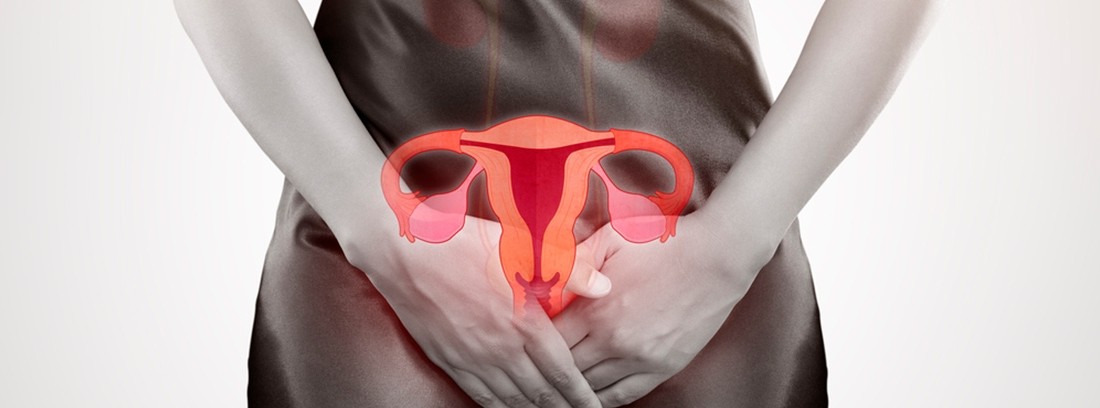Parts of the internal female reproductive system

The female reproductive system is made up of various organs, some internal and others. The internal organs of women are: vagina, uterus, fallopian tubes, and ovaries.
The vagina
The vagina is a conduit internal covered by a mucosa that communicates the vulva (external organ) with the neck of the uterus or cervix. The vagina has an external opening that may be partially covered by the hymen. It is an elastic duct of about 8 or 11 centimeters in length, made up of numerous folds and covered with a mucosa. This organ plays a role fundamental in the female reproductive system:
Finally, the vagina is the outlet for blood that occurs during a woman's menstruation.
The uterus
Also called the womb, it is the internal gynecological organ of larger size. It is a muscular, hollow organ, about 8 cm long and 5 cm wide, with a shape reminiscent of a pear. Its main function is to house the fetus and placenta throughout the pregnancy. It consists of 2 different parts, the body of the uterus and the cervix (cervical neck)
Body of uterus
The body of the uterus is made up of 2 layers:
Cervix
The cervix occupies the lowest part and is the one that is in contact with the vagina. It has a cylindrical shape and thick walls. Its function is receive sperm after ejaculation and projecting it into the body cavity of the uterus to achieve fertilization. During pregnancy closes with a mucous plug and isolates the amniotic sac from the outside to protect it from possible infections.
Fallopian tubes
The fallopian tubes or uterine tubes there are 2 conduits located to the left and right of the body of the uterus, that unite it with the ovaries, found in the abdominal cavity. They are about 10 cm long and are responsible for:
At one end, the fallopian tubes "hug" the ovary through fingerings called fimbriae, another end that is inserted into the uterine wall and a dilated body, which is where fertilization of the ovum can occur. They are covered inside by cilia, some villi that when contracting transport the sperm to the egg and the unfertilized egg or embryo into the uterus.
The ovaries
They are the female sex glands. Specifically 2, oval in shape and about 3 cm in size, located at the end of each of the Fallopian troops and inside which are the ovules. With each menstrual cycle one of the ovules (of one of the two ovaries) completes maturation and pierces the crust to detach inside the fallopian tube waiting to be fertilized by a sperm. Inside the ovaries 2 zones are distinguished:
The ovaries are protected by the fimbriae of the fallopian tubes and attached to the body of the uterus, the tubes, and the abdominal wall by five different ligaments.
You have doubts? Sign up for Savia, the platform digital health services of MAPFRE that allows you to chat for free with a gynecology specialist. You can also buy one at the best price and with the best specialists.
SIGN UP FREE
-
It is the channel through which the baby is expelled at the time of delivery (as long as it is vaginal) that is why it is also often called the birth canal.
- Endometrium: it is the innermost part, a mucosa that modifies its thickness throughout the menstrual cycle to receive the. If the implantation, the endometrium is shed and bleeding or menstruation occurs.
- Myometrium: it is the thickest muscular layer of the uterine body. Its function is to expand during pregnancy to allow it to contract during childbirth, with the famous contractions.
- Transport the ovum that is released from one of the ovaries (the left or right of to alternate menstrual cycles).
- Transport the sperm to the egg so that they try to fertilize it.
- If the sperm make it through, it takes care of move the fertilized egg into the uterus so that it is implanted in the wall.
- Ovarian cortex: It is where the eggs mature and the sex hormones are produced (essentially estrogens, progesterone and inhibin).
- Marrow: it is an internal area of connective tissue that houses blood and lymphatic vessels, as well as nerve endings.
- The internal genital organs in women are: vagina, uterus, fallopian tubes and ovaries.
- The vagina is the outermost organ within a woman's internal gynecological organs (sometimes mistakenly confused with the vulva, an external organ).
- The fallopian tubes are two tubes located to the left and right of the body of the uterus that join the uterus with the ovaries.
(Updated at Apr 14 / 2024)